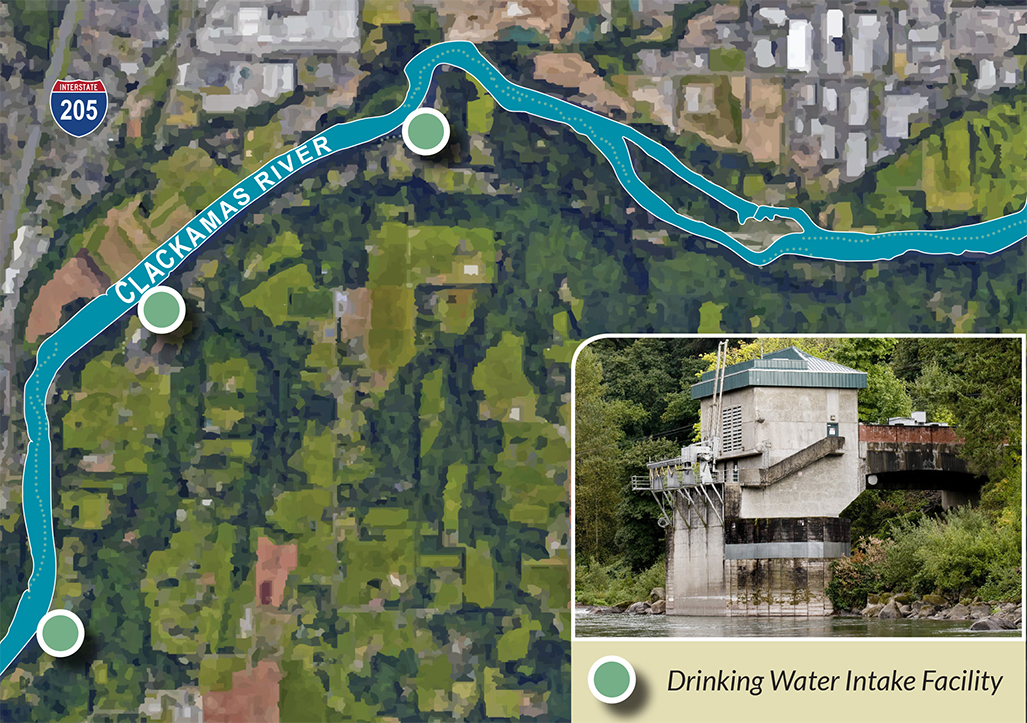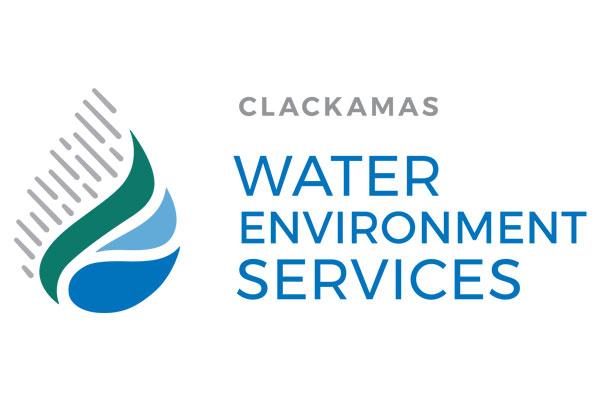A source of clean water
 The Clackamas River supplies high quality drinking water for over 300,000 people in Clackamas and Washington Counties.
The Clackamas River supplies high quality drinking water for over 300,000 people in Clackamas and Washington Counties.
Businesses in the Clackamas industrial area along Highway 212/224 are just upstream from four drinking water treatment plants.*
As a business, implementing stormwater best management practices and spill prevention measures are critical to protecting our drinking water supply.
Clackamas County continues to grow, and so does the demand for high quality water. Conserving and protecting the Clackamas River will play a key role in making the best use of this precious resource.
A Drinking Water Protection Area is defined by DEQ as the watershed (land around rivers, lakes, and streams) or recharge area that supplies a well or drinking water intake. Activities in this area have the ability to impact downstream municipal water users.
* Plants operated by Clackamas River Water Provider members include Clackamas River Water, North Clackamas County Water Commission, South Fork Water Board, and Lake Oswego/Tigard.
Spills can quickly enter the river
 Many storm drains are connected directly to the Clackamas River. When chemicals spill on a property or street, they travel to the river quickly. Only rain water should go down the storm drains.
Many storm drains are connected directly to the Clackamas River. When chemicals spill on a property or street, they travel to the river quickly. Only rain water should go down the storm drains.
Containment pallets, spill kits, and double walled tanks will help your business prepare for, and prevent, spills.
Simple steps to prevent pollution
 Prepare your site. Identify and label hazardous materials. Properly dispose of unneeded chemicals, equipment, and waste. Place spill kits where liquids are stored or transferred, and train your staff in spill response. Develop a spill response plan.
Prepare your site. Identify and label hazardous materials. Properly dispose of unneeded chemicals, equipment, and waste. Place spill kits where liquids are stored or transferred, and train your staff in spill response. Develop a spill response plan.- Contain hazardous liquids. Consider adding secondary containment to reduce the risk of spills. Common equipment includes: spill pallets, double walled tanks, and containment berms.
- Cover your waste. Scrap metal, used tires, garbage cans and dumpsters can be sources of stormwater pollution. Cover or move these materials inside.
- Report hazardous spills or discharges of wastewater into a storm sewer system by calling 9-1-1 (hazard/emergency), and ask the dispatcher to notify Water Environment Services (WES).
For other spill or pollution related questions contact WES at 503-742-4567.
Free tools and assistance
Businesses located within the Drinking Water Protection Area may be eligible to receive free or discounted spill prevention and response equipment, and free technical assistance. For more information, read the brochure, check out a recent article published in Happy Valley Monthly, read about all of the rebates and discounts for spill prevention, or contact:
 Translate
Translate






